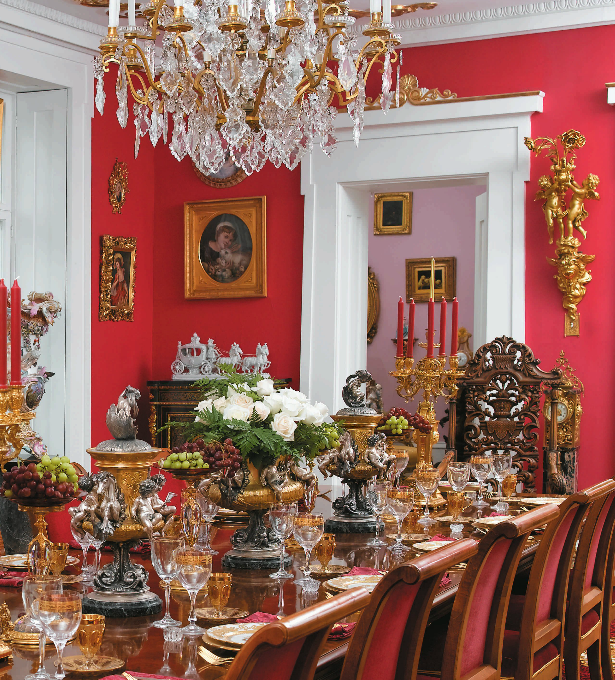Splendiferous Interiors: Magnificent Objects From Vaux Hill Mansion Go Up for Auction Tomorrow
The phenomenal Vaux Hill in Phoenixville should rightly be a Winterthur-style tourist attraction with a Gettsyburg spin. According to the Historical Society of Pennsylvania, it was originally a 300-acre farm purchased by James Vaux in 1772. Vaux was an amateur scientist, but a successful and influential one:
At his farm, James carried out scientific experiments in agriculture, becoming the first person to cultivate red clover in America, and also pioneered the use of anthracite coal for heating and cooking purposes. Accounts of his experiments can be found in early editions of the Franklin Institute Journal.
The Quaker Vaux — though reluctant to take sides in the Revolutionary War — also allowed his farm to be “a central location for a small portion of the Revolution,” which makes sense given that the estate is surrounded by Valley Forge. Proving that Vaux was a true Quaker in more than word, “both George Washington and General Howe rested in Vaux’s home on separate nights.”
The property (also known as Fatland) later passed on to the Wetherill family, one of whom tore down the original home and had it rebuilt by John Haviland, the architect who designed Franklin Institute and renovated Independence Hall. Haviland hewed to the same style of the original, more or less, though more elaborately. That’s when it became known for its interior and objects as much as for its role in the region. From The Colonial Homes of Philadelphia and Its Neighbourhood, published in 1912:
The interior adornment of the house, which was at that time said to be the handsomest in Pennsylvania, was most elaborate. Delicately carved marble mantelpieces were cause for proper pride. The walls were hung with paper brought from France and along the halls and opposite the nurseries was a full portrayal in colours of Polonius giving advice to his son.
The dining-room is of truly generous proportions, and had need to be for the lavish entertaining that was done there. It was no unusual thing for fifty people to sit down to dinner and on the occasion of Doctor Wetherill’s birthday parties in February sometimes as many as eighty guests would take their places at the table.
The authors called Vaux Hill “one of the most noted and notable seats in the region about Philadelphia.”
Later it was owned by Pete Camiel, the late chair of the Democratic Party, vaunted Rizzo foe, and chair of the PA Turnpike Commission; and Barbara Safford and her late husband Robert, whose stunning collection of more than 300 lots of “lavish European antiques” from Vaux Hill will go to auction, courtesy of Freeman’s, tomorrow.
Below, the rest of the auction catalogue. Prepare to have your eyes pop out.



